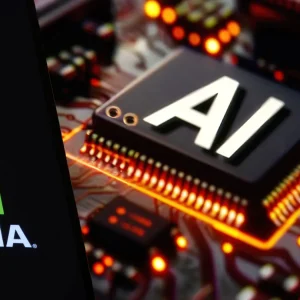
Recruitment is costly, time-consuming, and highly susceptible to lapses of judgement. It is little wonder that employers have sought the help of artificial intelligence (AI). Machine learning algorithms can now be applied in almost every stage of the hiring process, from herding attractive candidates to the right role before they even apply, to optimising job advertisements and mining resumes for evidence of the desired competencies and experience.

Now, AI has even begun to transform the job interview itself. It is no longer unusual for candidates to write or record answers to interview questions that are then analysed algorithmically to determine their aptitude for the role. Leading the charge in this niche has been HireVue, which provides a sleek end-to-end interviewing interface for more than 700 clients that include Unilever, Cathay Pacific and Rackspace.
Until last month, this included what the start-up termed a ‘visual analysis component,’ wherein insights on a candidate’s behaviour and competencies would be divined from their facial expressions. While HireVue claimed this service was grounded in solid research, critics lambasted this as pseudoscience: inferring intention from a furrowed brow was, they claimed, impossible, and attempting to do so had the potential to insert new gender and racial biases into recruitment that hadn’t existed before.
Last month, the start-up bowed to pressure and announced it began phasing out the tool last year. In many ways, the decision was an inflexion point for the role of AI in recruitment. It may well be the case that the use of facial analysis in candidate assessment may be on its way out. Even so, questions remain about the effectiveness of its many alternatives – and how to regulate them.
Express yourself
Proponents of facial analysis, a branch of machine learning designed to quantify facial expressions, claim it can provide employers with everything from identity verification to insights into a candidate’s personality traits and competencies. The practice is notably popular in South Korea, where a market has developed for training candidates to beat the system (“Don’t force a smile with your lips,” one instructor advised Reuters. “Smile with your eyes.”)
The approach has also been heavily criticised as pseudoscience. “The idea that you can determine that somebody is a good worker from how their face moves or looks? There is no scientific evidence that I’ve seen that backs that claim,” says Meredith Whittaker, a professor at New York University and a co-founder of the AI Now! Institute. In 2019, she co-authored a paper calling for a ban on facial analysis in recruitment. While facial expressions certainly provide physical cues for emotion, she says, they’re also highly contextual and the product of a multitude of factors.
“You can’t read someone’s frown to determine who they are or who their character is,” explains Whittaker. After all, an individual “may have grown up in different environments where showing emotion, physically or facially, may or may not have been acceptable.”
Facial expressions are also highly gendered, racialised, and are often defined by notions of ability and disability, adds Whittaker. “There is a lot of evidence… that these assumptions are deeply flawed and, again, are encoding stereotypes and assumptions without actually being valid assessments of who someone is, or whether they’ll be a productive worker,” she says.
Up until the end of last year, HireVue was perhaps the best-known company offering facial analysis as part of its applicant screening services – even though, as the company claimed, facial analysis played only a small part in its overall determination of a candidate’s competency. Last month it announced it would phase out the feature completely over the course of this year – a decision that chief executive Kevin Parker maintains was not a concession to criticism that the practice was scientifically worthless. Instead, HireVue’s natural language processing capabilities had “improved to the point where we felt the visual component wasn’t adding enough [relative to] the controversy we felt it was generating.”
We’ve interviewed almost 20 million people across the history of the company.
Kevin Parker, CEO, HireVue
Instead, explains Parker, the start-up now concentrates on revealing insights on what the candidate says in response to a set of specific questions, using natural language processing software to analyse aspects of their response like word usage or pronoun tense. “We’ve interviewed almost 20 million people across the history of the company,” says Parker, more than enough training data for its NLP algorithms to define a ‘good’ answer in response to a question about working in a team. “Rather than having a trained evaluator analysing those answers, we can transcribe the words that the candidate is using with a very high degree of accuracy and start to understand if that candidate is more or less team-oriented.”
A handy turn of phrase

By leaning even more into natural language processing, HireVue hopes to help recruiters overcome inherent biases. Even so, says Alex Engler, this form of AI assessment is still weighted with significant problems.
“The modern state of natural language processing can do some impressive things, but it does not understand language,” explains Engler, an AI Data & Democracy Fellow at the Brookings Institution. “It can make associations between language. It can make effective, good, impressive guesses about what a human might write, or might typically write. But it does not understand what it’s saying.”
Indeed, recent research by the former co-lead of Google’s ethical AI team, Timnit Gebru, suggests that the reliance of NLP models on training data scraped haphazardly from across the internet is likely to have increased the chance of racist and sexist language being included. Using similar models in a recruitment context could, argues Engler, lead to the emergence of racial or ableist biases against applicants. Knowledge of the kind of words that score well in an NLP model could also lead to it being gamed by savvy applicants – advice on which is now widespread.
Cheating won’t necessarily get the applicant very far, says Parker – at most, they would just advance to an in-person interview that they can’t game. As for the reliability of its NLP algorithms, Parker points to the recent review of HireVue’s AI systems by O’Neil Risk Consulting & Algorithmic Auditing (ORCAA.) The report largely praises the start-up for spotting and remedying biases in its models quickly, albeit with a few caveats – most notably, that HireVue was still investigating whether different regional accents among native English speakers skew results at the time of publication.
[Keep up with Tech Monitor: Subscribe to our weekly newsletter]
That review process is ongoing, says Parker, who remains confident in the start-up’s ability to discern accents, synonyms and equivalencies in speech. “Will it get better over time?” he says. “Yes, but the group differences today are quite small, and we can understand those as part of the assessment process.”
Parker confirms that the company will be inviting several more external audits over the course of 2021. The proliferation of private auditors like ORCAA is, in itself, a testament to a lack of regulation in the AI space. Legislative activism in the US and Europe suggests that this state of affairs may end soon, a change that Parker says HireVue welcomes. Broadly speaking, however, an industry-led approach on common standards would be more productive.
“I think we’re more likely to get the results that we’re looking for if industry leaders step in and say, ‘Here’s what we mean by an ‘audit’,” says Parker. “We’ll move faster than any legislative scheme. We’ll deal with it, hopefully, more comprehensively.”
Any parliamentary push on algorithmic accountability could increase transparency in the sector. Prolonged investigations into the precise capabilities of such tools may also reveal that the only certainty they provide is, in fact, that they provide certainty. It’s an observation that John Jersin has increasingly had since he left his position as LinkedIn’s vice-president for talent solutions.
During his time at the site, Jersin implemented many of the AI-based solutions that the platform now relies on to shepherd attractive applicants to the right roles. When it comes to the ultimate value that machine learning algorithms can deliver for candidate assessment, however, he believes that it’s often different from what is usually promised.
“It can reduce, radically, the amount of time that it takes to filter through a whole bunch of applications that might be very similar,” says Jersin – a fact that, in the end, explains the enduring appeal of AI in recruitment. “That’s not the value that these platforms are claiming to provide. But, in some cases, it is the value that they’re actually delivering.”






